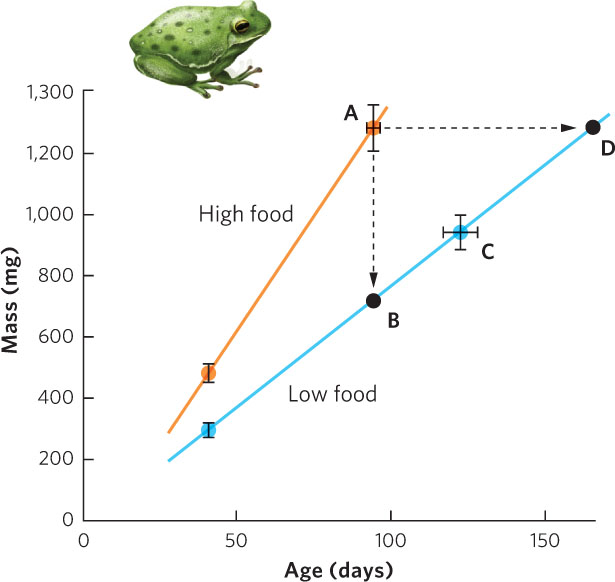
Figure 8.12 Alternative growth curves of a metamorphosing organism. The amount of food available can affect an organism’s mass and age at metamorphosis. In the barking treefrog, an individual living under high food is able to metamorphose at a large mass and young age, represented by point A. An individual living under low food conditions could achieve the same age at metamorphosis if it emerges at a smaller mass, for example at point B. It could achieve the same mass at metamorphosis if it took longer to metamorphose, for example at point D. In reality, the tadpoles reach a compromise and metamorphose at a somewhat smaller mass and a somewhat later age, as indicated by point C. Error bars are standard deviations.
Data from J. Travis, Anuran size at metamorphosis: Experimental test of a model based on intraspecific competition, Ecology 65 (1984): 1155–1160.